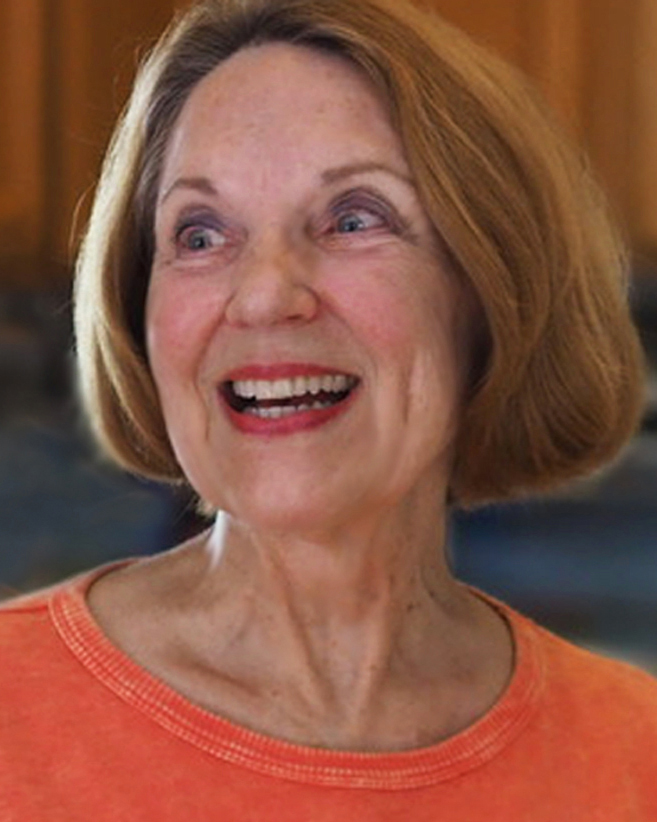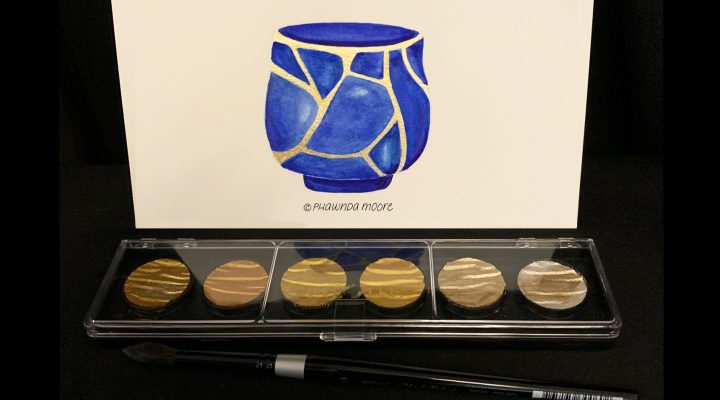Sometimes understanding other cultures’ artistic and spiritual perspectives brings greater meaning to our shared humanity. This article is about brokenness in my creative world.
As 2022 came to a close, I designed a New Year’s card with one of my favorite clients, a business consultant. Her annual, thoughtful message is mailed out to hundreds of clients in a handwritten envelope. Inside is a verse with a little piece of art to inspire direction to reach one’s personal goals as well as professional aspirations.

Phawnda Moore
The card began with timely words from Mary Oliver: “It is a serious thing just to be alive on this fresh morning in the broken world.”
Yes, it is broken. And increasingly, most of us are too, broken — battered from life as it is now.
Still, 2023 is a new beginning, which we so long for — letting go of what’s old and reaching out to embrace life with new resolutions, improved diets, workouts and budgets. Focusing on what matters. Being light to others.
Our collaboration continued with choosing an image for the card’s theme of brokenness, and we felt a connection to the Japanese practice of mending pottery with gold called kintsugi.
“Kintsugi, ‘golden joinery,’ treats breakage and repair as part of the history of an object rather than something to disguise.”
Kintsugi, “golden joinery,” treats breakage and repair as part of the history of an object rather than something to disguise. I remembered repairing a fragile teacup saucer many years ago that I could not bear to toss. It still brings me joy; to me it is beautiful.
I was excited to paint my first kintsugi vase and drew the broken pieces in pencil, then painted them in watercolor. When I “mended” the cracks with a small brush in iridescent gold, I experienced a feeling of satisfaction that was wonderfully new to me; the gold really did make the finished vase more beautiful and interesting. I admit to being a creative perfectionistic and was intrigued to learn more about this technique.
Artist and author Bonnie Kemske calls embracing the art of imperfection “the poetic mend.” Her book Kintsugi explores the meaning behind the process, which differs from repairing something to be “as good as new.” Instead, kintsugi exposes the damage, highlighting it as an art form in itself.
When applied to human lives, the transparency in this concept of brokenness is both emotional and spiritual. It acknowledges pain and invites acceptance and ownership of what was. Quietly undefeated, one needs patience in the mysterious process of renewal, allowing whatever time is needed, finding grace and gratitude in a newly discovered resilience.
Kemske says a kintsugi repair “speaks of individuality” and is evidence of hope in “an imperfect world.”
American lifestyle coach Candice Kumai, who has Japanese heritage, also links kintsugi to body and spirit. Her book, Kintsugi Wellness: The Japanese Art of Nourishing Mind, Body and Spirit, shares 10 metaphors to consider for the new year: Admire imperfection, live with great resilience, nourish your body, learn to take care, always do your best, continuously improve, accept what cannot be helped, care for your inner circle, cultivate sincere gratitude, be of service to others, welcoming gifts.
That’s good advice as we embark on 2023. Bringing more kintsugi into our lives can happen any time. As my clients’ cards went into the mail, my husband and I were dismantling the holiday decor and found a new opportunity to experience it.
Responding to the sound of a crash in the garage, we discovered shattered casualties on the floor, including a beloved, small bronze reindeer with a fractured foot and hoof. Sadly sifting through the pieces, only the hoof could be saved. Still, I think I can patiently recreate the top of its foot. And paint it gold for a new life.
Psalm 34:18: “The LORD is near to the brokenhearted. And saves those who are crushed in spirit.”
Phawnda Moore is a Northern California artist and award-winning author of Lettering from A to Z: 12 Styles & Awesome Projects for a Creative Life. In living a creative life, she shares spiritual insights from traveling, gardening and cooking. Find her on Facebook at Calligraphy & Design by Phawnda and on Instagram at phawnda.moore.
Related articles:
Five ways to practice tikkun olam and repair the world | Opinion by Susan Shaw
To heal racism, seek atonement before reconciliation, authors say
Spilled Cheerios and a theology of care | Opinion by Paula Mangum Sheridan


